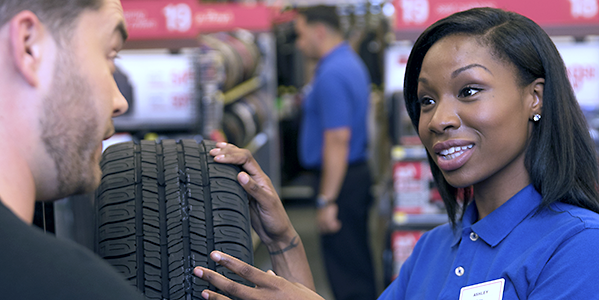Depend On Morris Tire and Alignment for Professional Service and Care
Depend On Morris Tire and Alignment for Professional Service and Care
Blog Article
Tire Service: Comprehending Tire Stress Surveillance Equipments
Understanding Tire Stress Tracking Equipments (TPMS) is a crucial facet of keeping optimum vehicle performance and security when driving. With improvements in automobile innovation, TPMS has come to be a standard attribute in modern vehicles, giving real-time information on tire stress levels. Delving much deeper right into the details of TPMS, one can discover the numerous elements that make up this system and the importance of each in making certain accurate tracking. From direct to indirect TPMS systems, the landscape of tire pressure tracking is varied, each with its one-of-a-kind collection of factors to consider and benefits. Keep tuned to unwind the intricacies of TPMS, from upkeep ideas to the indisputable benefits of maintaining your tires properly pumped up. tire shop morris.

Value of TPMS
The importance of Tire Pressure Surveillance Solutions (TPMS) exists in their capacity to boost lorry safety and efficiency via real-time monitoring of tire pressure degrees. Keeping the right tire pressure is crucial for making certain ideal handling, stopping, and general safety and security of a car. TPMS gives drivers with immediate comments on any type of underinflated or overinflated tires, permitting prompt modifications to be made.
Parts of TPMS
Making up different vital aspects, a Tire Pressure Monitoring System (TPMS) operates as a sophisticated security feature in modern-day vehicles. The main elements of a TPMS include sensors, a control module, and a caution indicator. Sensing units are generally situated in the tire shutoff stem or attached to the wheel setting up, where they determine tire pressure and transmit data to the control module. If it identifies substantially low pressure in any of the tires, the control component procedures this info and sets off a caution. The warning indication, usually a symbol on the control panel, alerts the vehicle driver to inspect the damaged tire or tires. Some advanced TPMS versions additionally display the real tire pressure analyses for each tire, providing drivers with real-time details to make sure optimum tire efficiency and safety and security. By keeping track of tire stress continuously, TPMS helps protect against accidents, decreases tire wear, and improves fuel effectiveness, making it an important part for vehicle safety and security and performance.
Sorts Of TPMS

On the other hand, indirect TPMS depends on the automobile's wheel rate sensing units to check tire stress. This system spots underinflation by contrasting the rotational speeds of the wheels. Indirect TPMS is much less pricey than straight TPMS, as it uses existing sensing units within the lorry.
While direct TPMS supplies more accurate analyses, indirect TPMS is simpler in design and commonly calls for less maintenance. Both systems have their restrictions and advantages, and the choice between link them usually relies on factors such as price, automobile make, and personal choice. Understanding the differences between these 2 sorts of TPMS can aid car owners make notified choices concerning tire maintenance and safety.
TPMS Maintenance Tips
Conduct regular checks on the tire pressure degrees and compare them with the TPMS readings to ensure they are consistent. During tire rotation or substitute, make certain that the TPMS parts are managed very carefully to prevent any type of possible damage. If the TPMS alerting light brightens on the click here for more info dashboard, resolve the issue immediately by checking the tire stress and the general system for any kind of mistakes.
Benefits of Appropriate Tire Pressure
Preserving correct tire stress, as stressed in TPMS Maintenance Tips, is critical for enjoying the countless benefits associated with optimum tire stress levels. Additionally, correct tire stress makes certain also tire wear, prolonging the lifespan of the tires and promoting safer driving conditions. In verdict, the advantages of appropriate tire stress go beyond just tire durability; they encompass improved fuel effectiveness, boosted safety, better automobile efficiency, and general driving comfort.
Final Thought
To conclude, recognizing tire pressure monitoring systems (TPMS) is critical for preserving optimum tire pressure and ensuring vehicle safety. By acknowledging the significance of TPMS, knowing with its components, understanding the different kinds readily available, sticking to appropriate maintenance pointers, and recognizing the benefits of maintaining proper tire stress, vehicle drivers can boost their driving experience and prolong the lifespan of their tires. Correct tire stress is essential to secure and effective automobile operation.

Report this page